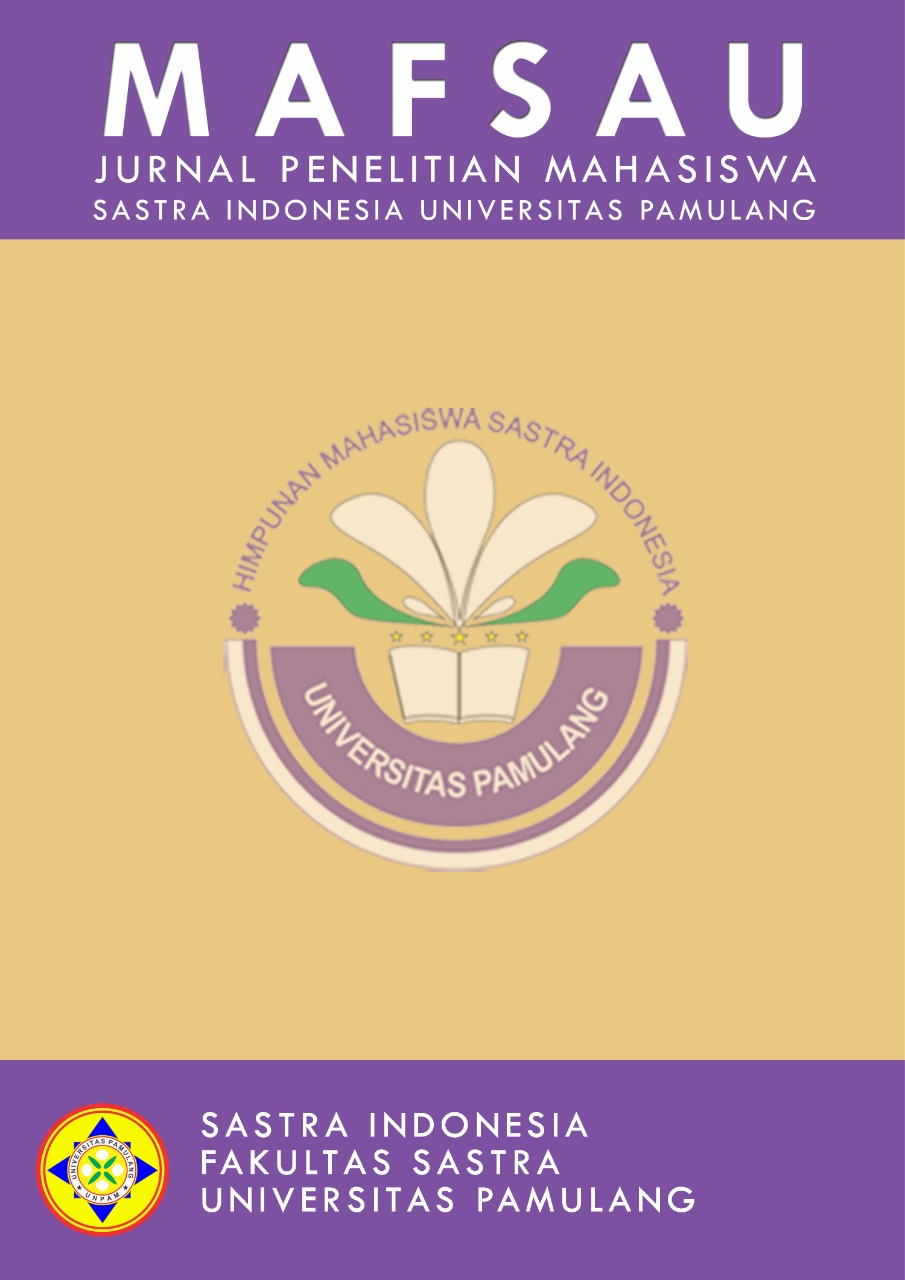ALIH KODE DALAM VLOG JURNALRISA EPISODE “CERITA MASYARAKAT DI TPU CIKADUT†(KAJIAN SOSIOLINGUISTIK)
Abstract
This research originated from the research’s interest in describing the code switching of Indonesian and Sundanese. This interference can be seen in the use of code switching in the Vlog Jurnalrisa the Episode of Community Stories in TPU Cikadut. Thus the researcher formulates problems, including: a) factor causing code switching in Vlog Jurnalrisa the Episode of Community Stories in TPU Cikadut, b) code switching function in vlog Jurnalrisa Episode of Community Stories in TPU Cikadut, c) type of code switching in Vlog Jurnalrisa Episode of Community Stories in TPU Cikadut. The objectives of the research include: a) to describe the type of code switching used in Vlog Jurnalrisa Episode of Community Stories in TPU Cikadut, b) describes the code switching function used in Vlog Jurnalrisa Episode of Community Stories in TPU Cikadut, c) describes the code switching factor used in the Vlog Jurnalrisa Episode of Community Stories in TPU Cikadut. As for this study using a qualitative descriptive method. In this thesis, there are 14 data as research abjects. Data collection is done through the technique of listening, recording, and taking notes. There are 2 type of code switching contained in this thesis, namely internal and external, types of internal code switching include: a) 11 data internal code switching from Indonesian to Sundanese. b) internal code transfer from Sundanese to Indonesian as much as 2 data. Type of external code switching include: a) code transfer from Indonesia to Inggris as much as 1 data. The code switching function found in this study include: a) clarifying and affirming 2 data statements, b) quoting other people’s conversations as much as 2 data, c) showing 2 data in the first language, d) moving topics from non-technical to technical as much as 4 data, e) the presence of as third speaker 2 data, f) keeps the distance as much as 1 data, g) shifting the atmosphere to speak as much of 1 data. factors causing code switching include: a) pursuing an interest as much as 3 data, b) offsetting the interlocutor as much as 2 data, c) the presence of a third speaker with 2 data, d) the main discussion is 3 data, e) evoke a sense of humor as much as 2 data, f) for prestigious only 2 data.References
Aslinda, dan Leni Syafyahya. 2014. Pengantar Sosiolinguistik. Bandung: PT Refika Aditama.
Chaer, Abdul, dan Leonie Agustina. 2010. Sosiolingustik Perkenalan Awal. Jakarta: Rineka Cipta.
Chaer, Abdul. 2015. Linguistik Umum. Jakarta: Rineka Cipta.
Kridalaksana, Harimurti. 2008. Kamus Linguistik Edisi Keempat. Jakarta: Gramedia Pustaka Utama
Mahsun. 2017. Metode Penelitian Bahasa. Depok: PT Raja Grafindo Persada.
Saraswati, Risa. 2015. Gerbang Dialog Danur. Jakarta Selatan: Bukune.
Suyatno, dkk. 2014. Bahasa Indonesia Untuk Perguruan Tinggi. Bogor: In Media.
Sugiyono. 2017. Metode Penelitian Kuantitatif, Kualitatif, dan R&D. Bandung: Alfabeta.
Sripurwandari, Yuliana Herwinda. 2018. Skripsi Alih Kode dan Campur Kode dalam interaksi jual beli di pasar Tradisional Kranggan, Temanggung. Yogyakarta: Universitas Sanata DharmaYogyakarta.
Downloads
Published
Issue
Section
License
Authors who publish with this journal agree to the following terms:
- Authors retain copyright and grant the journal right of first publication with the work simultaneously licensed under a Creative Commons Attribution License that allows others to share the work with an acknowledgement of the work's authorship and initial publication in this journal.
- Authors are able to enter into separate, additional contractual arrangements for the non-exclusive distribution of the journal's published version of the work (e.g., post it to an institutional repository or publish it in a book), with an acknowledgement of its initial publication in this journal.
- Authors are permitted and encouraged to post their work online (e.g., in institutional repositories or on their website) prior to and during the submission process, as it can lead to productive exchanges, as well as earlier and greater citation of published work.

